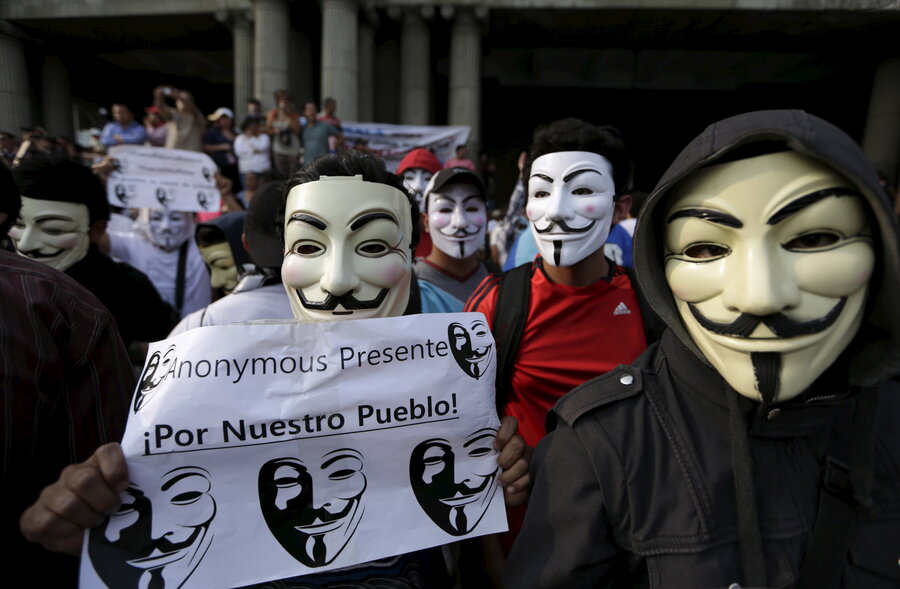How big is Anonymous? Maybe bigger than you thought
Loading...
The actual size and reach of the shadowy hacktivist collective Anonymous has long been the fodder of online squabbles. It's diminished by detractors and puffed up by ardent devotees.
So, a University of Copenhagen graduate student set out to determine the actual extent of Anonymous' influence around the world. And, it turns out that Anonymous appears to have a wider scope and is more international than previously imagined.
Even academics who study Anonymous were surprised. "The Anonymous network is larger than many of us thought," said Gabriella Coleman, an anthropology professor at McGill University and author of "Hacker, Hoaxer, Whistleblower, Spy: The Many Faces of Anonymous."
The analysis looks at Facebook pages connected with Anonymous to gain insight into its international prowess. Yevgeniy Golovchenko, a graduate student in the school's sociology department, examined 2,770 Anonymous Facebook pages that generated a collective 22.2 million "likes." This is just the “absolute minimal size” of the entire global Anonymous network, Mr. Golovchenko explained in an interview.
The point of the study was to "show the enormity and connectivity of the Anonymous movement at a global level," he said. The end result revealed a network greater than he expected. It was even "a lot bigger than my Anon informants thought it would be," said Golovchenko.
Professor Coleman, considered the leading expert on Anonymous, says the data reveals "a parallel world, or really worlds, that live on Facebook" instead of other social media sites such as Twitter and Internet Relay Chat services.
It is far more likely there are more Anonymous Facebook pages than the ones in Golovchenko’s study. Facebook pages belonging to Anonymous included in his analysis had to meet at least one of the following criteria: Pages directly identified as Anonymous ("we are Anonymous"), shared or organized "operations," or used Anonymous symbols beyond the Guy Fawkes mask.
"The [Anonymous' network is also dynamic," he noted, since when "some pages die out, others are born." The average Anonymous page was connected to 18 other Anonymous pages. Golovchenko used Facebook “likes” as a way to establish connections, because a “like” acts as an “acknowledgement,” and shows the admin of one page is aware of another Anonymous contingent, in most cases in a different country. The "Offiziell Anonymous Page" had the most connections with 517 likes. It should be noted that “Offiziell Anonymous Page” hasn’t updated since December 2014.
Golovchenko was drawn to Anonymous' Facebook pages given these pages are a public and easily accessible aspect of the relatively secretive hacktivist collective. These Facebook pages exist to either share information, or promote and help organize projects, and if they were harder to access, they’d alienate the average person.
Looking at all this Facebook data reveals several patterns. The position of the "node groupings was done by an algorithm, but it magically describes the realities of where people live in the world, to some extent,” said Golovchenko. An example of this are the German Anonymous Facebook pages, like the Anonymous Deutschland node, which are shown as blue dots:
Another example of this regional breakdown is the Anonymous Unified Korea node, which is primarily focused in West Asia, except for that one supportive Belgian Facebook page:
Looking at the Anonymous Angola node reveals an even smaller network comprised of only a few African countries with the exception being Brazil (see below). Anonymous Hacker Brazil has a much larger international network.
Through this visualization, it is easy to identify allies of certain sects, or regional Anonymous crews. For example, quite a few Brazilian Anonymous pages are connected to Anonymous in Iceland, of all countries. The Occupy Brazil node is connected to various Anonymous Facebook pages in Canada, which could explain why so much traffic during a recent operation against Canadian government websites came from Brazil.
All these networks within networks reveal an incredibly complicated communication stratus. "Even if only one-third of the likes represent actual Facebook users," noted Golovchenko, "the network is surprisingly immense … . Only few mainstream media can match the movement’s enormous internet infrastructure."
Click here to view the entire visualization.











